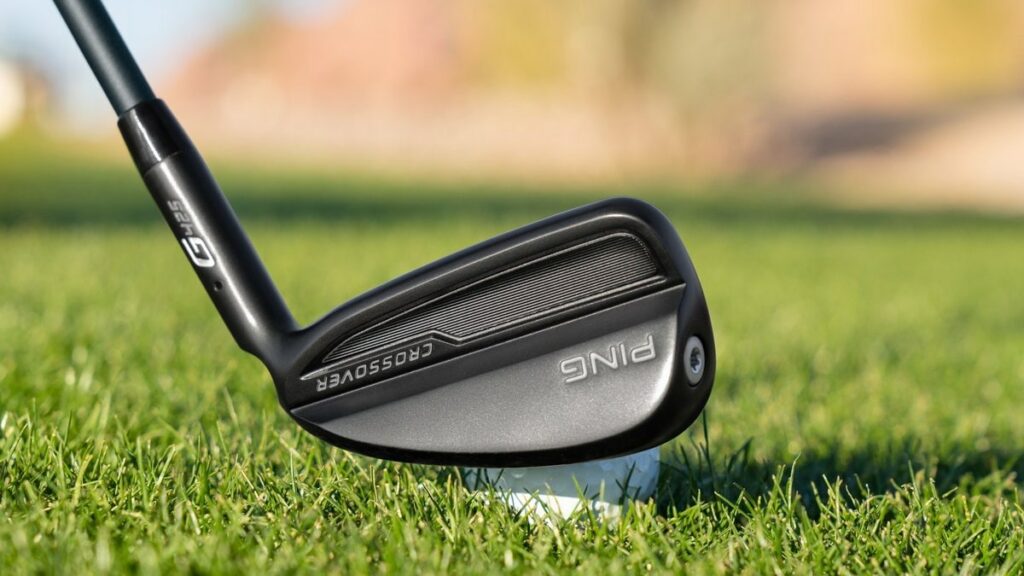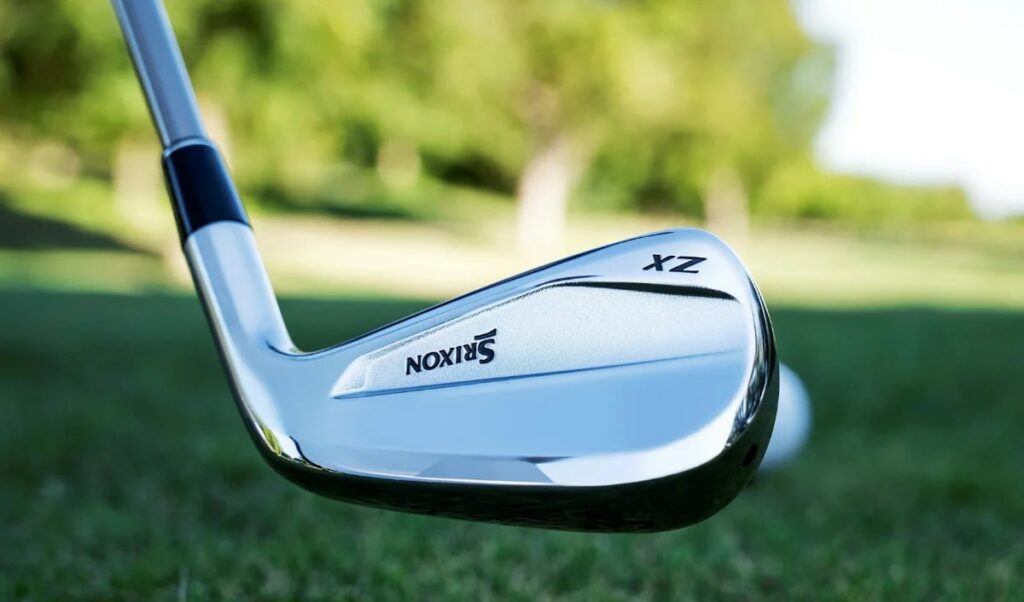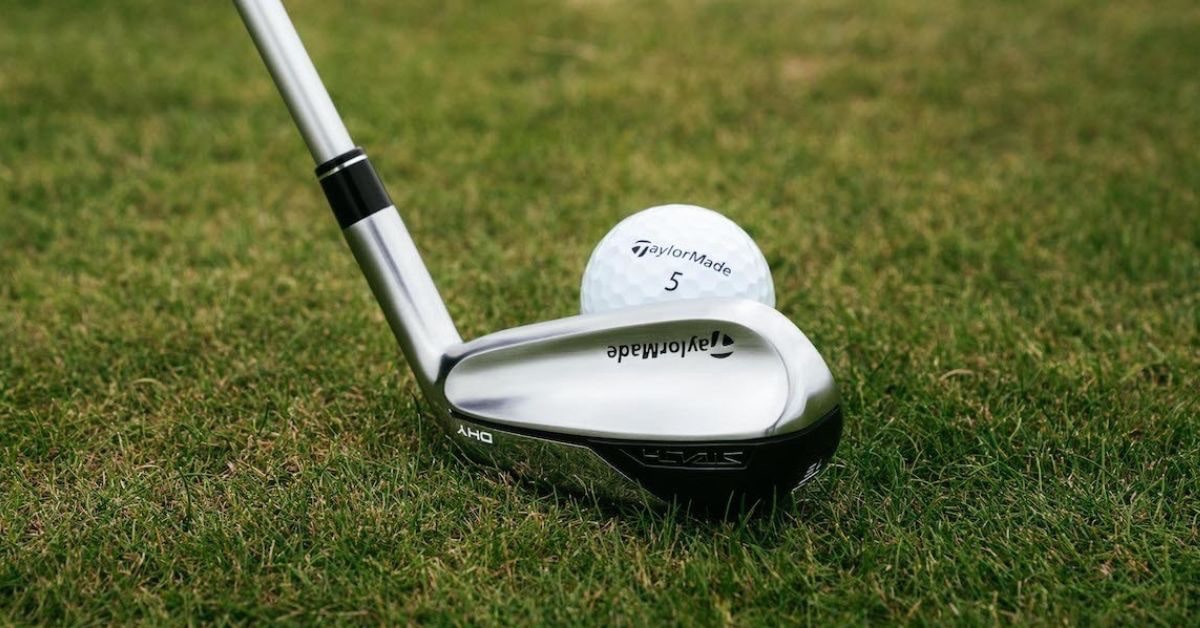Many golfers struggle to consistently hit their long irons. When I discovered hybrids and utility/driving irons, it made a huge difference to my confidence over long shots.
So, what’s the difference between a utility iron vs a driving iron?
The short answer: zero difference! It’s simply two terms for the same golf club.
In this article, you’ll learn how utility/driving irons compare to traditional long irons and hybrids, and whether you should consider putting one in the bag this season.
Utility Iron vs Driving Iron
In short, utility irons and driving irons are the same. Historically, they were referred to as ‘driving irons’ for their use off the tee. However, the term ‘utility iron’ has become increasingly popular as it’s a suitable long iron replacement for any long shots.

What Is a Utility Iron?
A utility iron is a low-lofted club designed for tee shots and long approach shots.
Typically, utility irons feature a hollow head design with a lower center of gravity than traditional long irons, offering slightly higher launch angles and more forgiveness.
However, utility irons are often suited to better golfers since they require faster club speeds, and have smaller sweet spots than their hybrid equivalents.
Is a Utility Iron a Driving Iron?
Yes, a utility iron is a driving iron — they are two terms to describe the same club.
In the past, driving iron was the most common term as the club was designed as a driver alternative for tee shots. With a shorter shaft and iron-like head shape, it allowed for better accuracy when needed — without sacrificing too much distance.
But in recent years, manufacturers have preferred the term utility iron. Generally, the club has become more versatile as a general long iron replacement. Along with tee shots, utility irons can be useful for long shots off the fairway or rough.

Long Iron vs Utility Iron
Utility irons have the same loft and lie angles as traditional long irons. However, there are differences that allow for additional launch, speed, and distance.
Put simply, the differences are in the shaft material and the head design.
Let’s dive into each difference in detail:
Difference 1: Shaft Material
Utility irons typically have graphite hybrid shafts. This makes the shaft lighter and more forgiving than a steel shaft in a long iron, with less vibration.
Long irons are usually included within a complete iron set. Essentially, they have steel shafts to isolate loft and length as the only variables for distance gapping.
Instead, utility irons utilize graphite hybrid shafts. Not only does this provide more forgiveness, but also more explosive ball speed and launch for extra distance.
This can be particularly useful off the tee. For instance, some golfers prefer to use a utility iron off the tee instead of the driver when hitting the fairway is vital — without sacrificing too much distance. Hence, the alternative term: driving iron.
Difference 2: Head Design
Utility irons tend to have a hollow face. This enables a lower center of gravity than a solid iron head, producing higher launch angles and better MOI for forgiveness.
For instance, the TaylorMade Stealth UDI utility iron incorporates a layer of “SpeedFoam Air” in the cavity. This helps to deliver “enhanced forgiveness” compared to long irons.
At the top end of the bag, golfers often struggle with gapping. On average, it can seem like your irons go the same distance, with a large distance gap to the woods. So, a utility iron can help fill that gap between your irons and fairway woods.
Ultimately, the use of graphite shafts and a hollow head design allows for higher ball speeds, slightly higher launch angles, and better forgiveness than long irons.
In the video below, Ian Fraser and Matt Blois of TXG discuss the differences between traditional long irons and utility or driving irons:
Hybrid vs Utility Iron
As mentioned in the previous section, utility irons tend to share the same graphite shaft as a hybrid. That means the difference lies predominantly in the club head design.
Hybrids
Put simply, hybrids visually resemble fairway woods.
Often sharing the same technologies — like the TaylorMade Twist Face — hybrid clubs feature a hollow head design and thin crown as found in a fairway wood or driver.
But, unlike traditional woods, hybrids are intended to strike the ball with a descending blow, rather than sweeping or slightly ascending angles of attack.
Essentially, the relatively large club head allows for a lower center of gravity and a larger sweet spot — providing high launch and excellent forgiveness on longer shots.
Utility Irons
On the other hand, utility irons resemble the looks of traditional irons.
When compared to hybrids, utility irons have smaller hollow heads with a higher center of gravity. This means they tend to launch flatter, with lower peak heights.
Therefore, utility irons are better suited for more experienced golfers with faster swing speeds, who can afford lower launch angles. At slower swing speeds, there is a risk that the ball will struggle to get airborne, and a hybrid would be better suited.
Ultimately, it comes down to looks and performance. If you’re after a flatter launching club that more closely resembles an iron, then a utility iron is ideal. But, if you need extra forgiveness and a higher launch in a wood-like body, then go for a hybrid.
In the video below, Michael Newton compares a 19º hybrid with a 19º utility iron:
Conclusion
In summary, there is no difference between a utility iron vs a driving iron — they are simply two terms to describe the same golf club.
Utility/driving irons are a low-lofted long iron replacement, designed for use off the tee and for long shots out of the fairway or rough — typically into long par 5s.
Filling the gap between your irons and your woods, the decision is whether to choose a utility iron or a hybrid. While a hybrid can offer launch and forgiveness, utility irons are preferred by players who like to play irons and shape the ball.
Ultimately, utility irons can be a handy addition to the bag. They are more forgiving than long irons, and will typically perform more reliably than a 3-iron.


